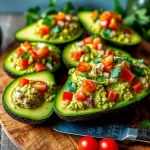Choosing the right ingredients for cookbook recipes starts with understanding food labels. At first glance, numbers and terms like “% Daily Value” or “trans fats” might feel confusing. But mastering these details can transform how you prepare healthy dishes for your family. Let’s break it down together.
Ever noticed PLU codes on produce? A four-digit code starting with 3 or 4 means conventional farming with pesticides, while a five-digit code beginning with 9 signals organic. These small details matter when selecting ingredients for your meals. And what about sugar? Did you know terms like “agave nectar” or “dehydrated cane juice” are just clever names for added sugars?
We’re here to simplify this journey. By learning to read ingredient lists, you’ll spot hidden sodium (like sodium nitrite) or unhealthy fats that could sabotage your healthy dishes. For instance, the American Heart Association warns that most Americans consume double the recommended 2,300 mg of sodium daily—knowledge that helps adjust your cooking choices.

Every number on a label tells a story. The first ingredient listed is the most abundant in the product, so choosing items where whole foods come first ensures better nutrition. With this knowledge, you’ll craft cookbook recipes that align with your family’s dietary needs—from heart-healthy sodium limits to complete proteins in plant-based meals.
Join us as we turn these labels into tools for smarter shopping and cooking. Let’s make every meal a step toward wellness, one informed choice at a time.
The Hidden Language of Food Labels: What You Need to Know
Food labels might seem simple, but they hold secrets. These secrets can change how you think about cooking. The front of a package might say “natural” or “artisanal,” but these words aren’t strictly defined. The truth is in the Nutrition Facts panel and ingredient list.
Look at the regulated parts first. The ingredient list shows allergens like milk, eggs, or soy. These are the Top 8 allergens that must be clearly labeled since 2006. Words like “non-GMO” or “organic” have strict rules, but “dairy-free” does not. Knowing this helps you pick ingredients that fit your diet and cooking plans safely.
“May contain” warnings are not clearly defined, so always check the ingredient list. For example, a “dairy-free” snack might still have milk proteins unless it’s made in a dedicated facility. These details are crucial when you’re adapting recipes or trying new cooking ideas, like if you or your guests have allergies.
Learning these details makes you more confident in the kitchen. By focusing on regulated claims and spotting marketing tricks, you can make smart choices. Every label has a story to tell, and now you know how to read it.
Nutrition Facts Panel: Breaking Down the Numbers That Matter
The Nutrition Facts panel is your guide to making smart choices forcookbook recipes. First, look at the serving size—it’s a standard. A bagel is 110g, and a cookie is 30g. Knowing this helps you keep track of calories, even when you’re making more food.
Calories are not just numbers; they’re energy. For example, a pasta dish is 140g cooked, and a pancake is 110g. This shows how ingredients add up to your daily energy needs. Making meals at home helps you balance these values, so you eat well without too much.
When you cook, measure ingredients carefully. For instance, use 5g of grated cheese or 15ml of oil. If you’re doubling a recipe, double the calories and nutrients too. This keeps yourcookbook recipesboth tasty and healthy.
Also, 50% of Americans spend a lot on food at restaurants. But, by understanding the Nutrition Facts panel, you can make meals at home that are just as good. Using these tips, you can turn labels into tools for better cooking.
Beyond Calories: Understanding Macronutrients for Healthier Cooking
Creating culinary creations that nourish and delight starts with mastering macronutrients. Proteins, fats, and carbohydrates aren’t just numbers on a label—they’re the building blocks of every meal. Let’s explore how they work together to shape both taste and nutrition.
Proteins like chicken, tofu, or lentils add structure and satiety. Think of them as the foundation of dishes like the high-protein crunch wraps from CRUNCH WRAPS, which balance texture and nutrition. Fats, such as avocado or olive oil, enhance flavor and keep you full. Opt for unsaturated fats to boost heart health, as seen in recipes from PLANNED’s meal prep guides. Carbs fuel energy, so choose whole grains or sweet potatoes instead of refined sugars to avoid energy crashes.
Our favorite cookbooks make this simple. ONE More Time’s tracked recipes show how 40% carbs, 30% protein, and 30% fats create satisfying healthy dishes. Even small swaps matter: replacing butter with nut butter in desserts or swap regular pasta for chickpea flour versions. These choices align with dietary goals without sacrificing taste.
Remember, macronutrient ratios vary per person. Active cooks might boost protein using A Modern Way to Cook’s plant-based options, while those meal prepping can layer ingredients from THE PLANNED to maximize nutrient density. Every adjustment turns knowledge into delicious, nourishing meals everyone can enjoy.
Ingredient Lists Decoded: Reading Between the Lines
Every ingredient list has a story to tell. Start by looking at the first three items—they’re the most used. For recipes that are good for families, choose lists with whole foods first. Stay away from products with artificial flavors or high-fructose corn syrup.
Watch out for hidden sugars in terms like “cane syrup” or “maltodextrin.” Ingredient splitting, where sugar is listed in different ways, can add up. Choose items with simple, recognizable ingredients. Ancient recipes like lamb stew from Iraq used basic ingredients like mutton and beer. Today, we can make similar dishes with cumin and mint, showing that simple cooking is timeless.
- Check for whole ingredients first: oats, vegetables, or meats.
- Avoid items with multiple sugar aliases (e.g., sucrose, dextrose).
- Trust shorter lists—fewer ingredients often mean less processing.
Modern cooks can use these tips to make healthier meals. For example, the Tuh’u recipe from Yale’s 1730 BC tablets used barley and beer. Today, we might use broth instead of beer but keep the focus on simple ingredients. When updating old or new recipes, aim for clarity. Our research shows small changes, like making your own mixes, can greatly improve meals.
For dishes with more flavor, try 10 essential spices that add taste without extra sugars. By understanding ingredient lists, you can make meals that are both traditional and healthy. Every choice you make today helps create better meals for tomorrow.
Transforming Cookbook Recipes with Nutritional Awareness
Learning about food labels lets you change how you make cookbook recipes. You can tweak ingredients to make them healthier without losing flavor. Start by looking at the nutrition of your favorite dishes.
For example, you can swap full-fat dairy for Greek yogurt or plant-based options. This keeps the dish’s texture but cuts calories.
Books like The Whole30 Cookbook or Thug Kitchen give you recipe inspiration for healthy eating. They have over 100 recipes that cut out processed foods and focus on whole foods. Even old favorites can get a makeover.
Try cutting down on sugar in desserts or adding greens to pasta sauces. These small changes make meals healthier without losing flavor.
Check out cookbooks like Oh She Glows or How Not to Die for plant-based cookbook recipes. They show that healthy food can still taste great. Making small changes, like reducing sodium or increasing fiber, starts with knowing what’s in your food.
Adapting recipes isn’t about giving up. It’s about being creative. Letting nutritional awareness guide you turns regular recipes into healthy, personalized meals. Every kitchen experiment is a chance to get healthier without losing the fun of cooking.
Smart Substitutions: Maintaining Flavor While Boosting Nutrition
Every kitchen needs meals that taste good and are good for you. We’ve found simple swaps to make everyday meals healthier. These changes make your meals both tasty and nutritious.

Begin with dairy swaps. Use avocado puree or applesauce instead of butter in baking. Replace sour cream with yogurt or cottage cheese mixtures. Coconut milk or blended cashews add creamy texture without extra fat.
Flour swaps are easy too. Mix almond flour with gluten-free blends for denser cakes. Use bean puree for moist muffins. Applesauce or coconut sugar can replace refined sugar, cutting calories while keeping things tender.
Protein choices are important. Try veggie burgers or tempeh instead of meat. Beans are great for ground beef. Nutritional yeast or CHAO cheese offer a plant-based cheese option. Low-fat sauces are another way to cut calories.
Our top pick? A strawberry smoothie with almond milk and banana. It has half the calories of a milkshake but is just as creamy. These tips are perfect for busy days, showing healthy meals can be easy. Try these swaps to make meals that are both delicious and nutritious.
Portion Control: The Missing Ingredient in Most Recipe Books
When making homemade meals, it’s important to control portions. Many recipes say “serves 4” but don’t tell you how to adjust for different sizes. For example, doubling lasagna’s serving size doubles the calories.
By studying food labels, you can learn to guess portions without using measuring cups. This skill makes any recipe an easy meals solution for families.
We make portioning easier with these tips:
1. Use your hand as a guide—one palm equals a protein portion.
2. Fill half your plate with veggies to stretch servings.
3. Season boldly: herbs like basil (1 tsp dried = 1 tbsp fresh) and citrus zest amplify flavor in smaller portions.
4. Store leftovers in single-serving containers to avoid overeating later.
Proper seasoning techniques (learn more at Comfort Food Cook) make smaller portions satisfying. Adjust family meals by serving sauces on the side—let everyone take what they need. Even busy cooks can master this with practice. Your favorite easy meals become healthier when paired with mindful serving sizes. By aligning taste and technique, homemade meals become both nourishing and enjoyable without guesswork.
Creating a Balanced Meal Plan Using Food Label Knowledge
Meal planning doesn’t have to be hard. Start by looking at food labels to find healthy ingredients your family likes. For example, pick whole grains with 3 grams of fiber or beans for iron and zinc. Our family-friendly recipes help you mix ingredients for balanced meals.
Start with breakfast. Choose oatmeal with chia seeds or Greek yogurt. Lunch and dinner can have plant-based proteins like lentils or tofu with veggies. Snacks? Go for nuts without hydrogenated oils. Remember, balance is about variety, not being perfect.
Use these tips to simplify meal planning. For instance:
- Pair high-sodium dishes with low-sodium sides like steamed veggies
- Switch protein sources weekly (chicken, fish, legumes) to avoid boredom
- Choose recipe inspiration that uses seasonal produce for savings
Begin with small changes. Swap one processed snack a week for homemade ones, like a turkey wrap. These small changes can lead to lasting habits. Let your family’s tastes guide you, not strict rules.
Special Dietary Needs: Navigating Food Labels for Allergies and Restrictions
Living with food allergies or dietary restrictions doesn’t mean you have to give up on cooking. Over 32 million Americans have food allergies, making it crucial to read labels well. First, check the ingredient lists for the top eight allergens: peanuts, tree nuts, milk, eggs, soy, wheat, fish, and shellfish. These cause 90% of food allergy reactions.
Look for labels that say “gluten-free” or “allergen-safe.” Cross-contamination is a big risk: 40% of accidental exposures happen because of misreads. It’s smart to keep your kitchen clean and use separate tools for cooking without allergens. Check out ACAAI’s guide for tips on avoiding cross-contamination.
To make meals inclusive, try smart substitutions. Use almond meal instead of wheat flour or oat milk as a dairy substitute. For ideas, look at these allergy-aware recipes made for different diets. Always check for “may contain” warnings and batch numbers on labels.
Plan meals that everyone can enjoy, like stir-fries with customizable toppings or grain bowls. Remember, 93% of shoppers check labels for allergens, so stay alert. With the right approach, you can turn restrictions into chances for creative cooking. Your kitchen can be a place where every family member loves the meals made with care and knowledge.
From Label to Table: Putting Your Nutritional Knowledge into Delicious Practice
Now that you know how to read labels, it’s time to start cooking. Cooking with nutrition in mind can make your kitchen a place of creativity. A study found that cooking classes help people make better food choices. They learned to pick low-sodium foods and use fresh ingredients.
Start by looking for cookbook recipes that match your health goals. Try the Savor Mediterranean cookbook for a mix of taste and health.
Start with small changes. Make your own sauces instead of buying them. Try using herbs to cut down on salt. For example, garlic and lemon can add flavor without too much salt.
Even small changes can make a big difference. Swapping store-bought snacks for homemade ones can cut sodium by 80%. Dietitians create these recipes to help.
Every meal is a chance to make a healthy choice. Use your label-reading skills to shop and cook better. Don’t worry if you’re not perfect. Just keep trying new things and learning.
Let labels guide you, but let your creativity shine in the kitchen. You have the tools to cook well. Your health and taste buds will appreciate it.
Source Links
- https://medium.com/authority-magazine/decoding-the-diet-vicky-rolfe-on-how-to-read-food-labels-to-truly-understand-what-is-in-your-food-6c04eba632ca
- https://www.heart.org/en/healthy-living/healthy-eating/eat-smart/nutrition-basics/understanding-ingredients-on-food-labels
- https://fitmencook.com/blog/how-read-food-nutrition-labels/
- https://godairyfree.org/food-and-grocery/food-label-info/the-secrets-to-decoding-labels
- https://www.simonandschuster.co.uk/books/The-Language-of-Food/Annabel-Abbs/9781398502253
- https://www.ecfr.gov/current/title-21/chapter-I/subchapter-B/part-101
- https://www.federalregister.gov/documents/2014/12/01/2014-27833/food-labeling-nutrition-labeling-of-standard-menu-items-in-restaurants-and-similar-retail-food
- https://lillieeatsandtells.com/the-best-macro-friendly-cookbooks/
- https://orionhealthwellness.com/how-to-calculate-macros-for-weight-loss/
- https://www.bbcgoodfood.com/review/16-of-the-best-healthy-cookbooks-to-buy
- https://www.bbc.com/travel/article/20191103-the-worlds-oldest-known-recipes-decoded
- https://www.bonappetit.com/test-kitchen/inside-our-kitchen/article/what-does-a-recipe-editor-do?srsltid=AfmBOopzPN5cH22XlQCJWcUPyzzcBo3C9BHbWfHpIXcxAbjh02asnc6z
- https://www.success.com/best-healthy-cookbooks-and-books-about-food/
- https://www.slurrp.com/article/10-most-popular-cookbooks-for-healthy-eating-1716994558282
- https://www.heart.org/en/healthy-living/healthy-eating/cooking-skills/cooking/smart-substitutions-to-eat-healthy
- https://kriscarr.com/healthy-recipe-substitutions-vegan/
- https://www.npr.org/2022/02/21/1082220527/missing-an-ingredient-from-your-recipe-heres-what-to-use-as-a-substitute-instead
- https://www.foodprotection.org/members/fpt-archive-articles/2019-01-the-missing-ingredient-food-safety-messages-on-popular-recipe-blogs/
- https://www.cigna.com/knowledge-center/hw/meal-planning-aa154666
- https://primooils.com/understanding-food-labels-a-guide-to-making-informed-food-choices/
- https://www.cooksmarts.com/cooking-guides/meal-planning-for-everyone/benefits-of-a-meal-plan/
- https://sierraallergy.com/exploring-dietary-changes-to-manage-food-allergies-effectively/
- https://stoneoakallergy.com/the-ultimate-guide-to-allergy-friendly-cooking-delicious-recipes-useful-tips/
- https://pmc.ncbi.nlm.nih.gov/articles/PMC10157645/
- https://pmc.ncbi.nlm.nih.gov/articles/PMC4063875/














